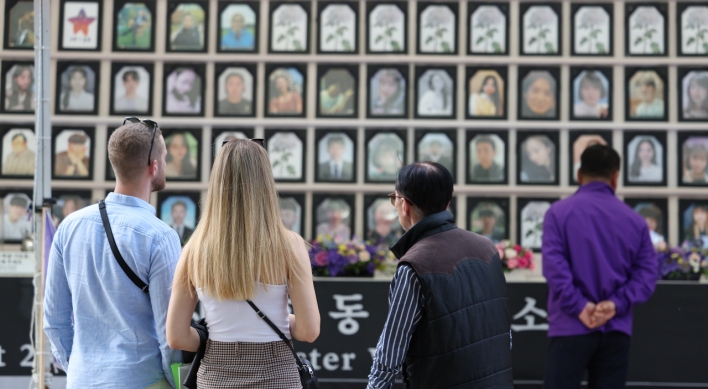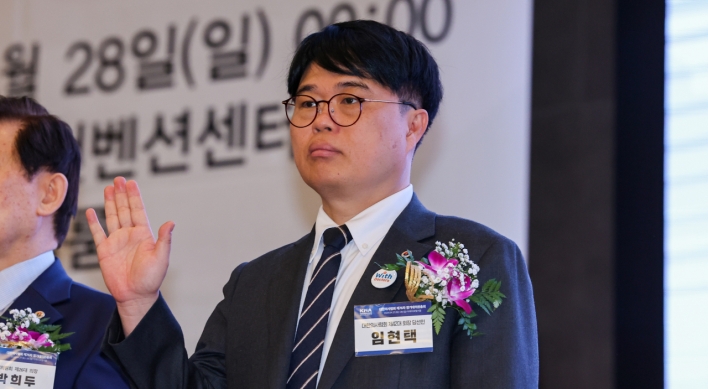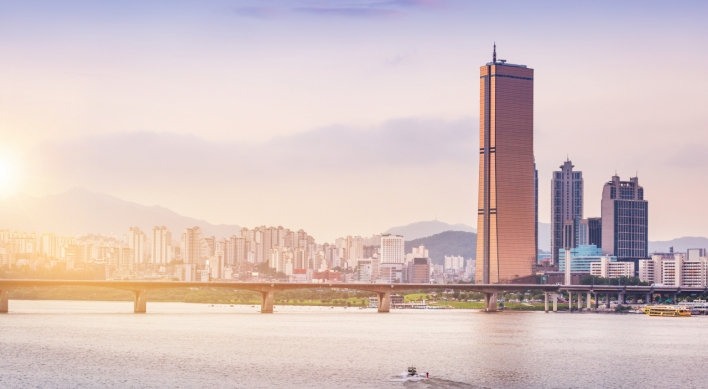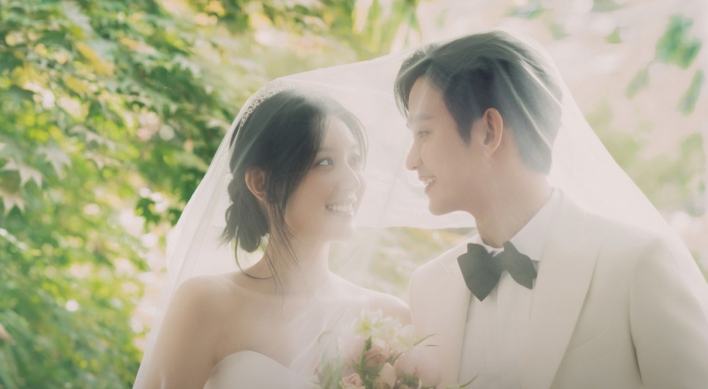Gardens, parks pop up on rooftops as Seoul seeks nature in concrete jungle
Little green dots are popping up in Seoul’s predominantly grey skyline, as an increasing number of roofs are being turned into gardens, farms and tiny ecological parks.
With little vacant space left and land prices soaring high, Seoul is looking at the roofs of its numerous concrete structures as an untapped frontier for public green space.
“Koreans are discovering roofs as a valid substitute to front yard gardens and parks, for which their cities hardly have any space left,” said Jason Yoo, who runs local landscape design firm Scape360.
“Almost all new buildings designed these days have plans for the rooftop space,” he said.
Dongbu Corp. is one of the many that try to incorporate the idea into its building designs.
“Rooftops used to be locked up for security, safety and maintenance reasons,” said Lee Jeong-min, a public relations officer at Dongbu, which constructs residential apartment buildings.
“The latest trend is to open them for use as community lounges. We have devised a set of guidelines on rooftop utilization to be applied in designing future apartment buildings.”
Seoul City is actively promoting this rooftop revolution, offering incentives of as much as 70 percent of the installation costs.
Its green roof project, which started in 2002, resulted in about 243,000 square meters of green space atop some 550 commercial, public-purpose and residential buildings. Nearly 40 billion won have been spent in incentives so far.
Little green dots are popping up in Seoul’s predominantly grey skyline, as an increasing number of roofs are being turned into gardens, farms and tiny ecological parks.
With little vacant space left and land prices soaring high, Seoul is looking at the roofs of its numerous concrete structures as an untapped frontier for public green space.
“Koreans are discovering roofs as a valid substitute to front yard gardens and parks, for which their cities hardly have any space left,” said Jason Yoo, who runs local landscape design firm Scape360.
“Almost all new buildings designed these days have plans for the rooftop space,” he said.
Dongbu Corp. is one of the many that try to incorporate the idea into its building designs.
“Rooftops used to be locked up for security, safety and maintenance reasons,” said Lee Jeong-min, a public relations officer at Dongbu, which constructs residential apartment buildings.
“The latest trend is to open them for use as community lounges. We have devised a set of guidelines on rooftop utilization to be applied in designing future apartment buildings.”
Seoul City is actively promoting this rooftop revolution, offering incentives of as much as 70 percent of the installation costs.
Its green roof project, which started in 2002, resulted in about 243,000 square meters of green space atop some 550 commercial, public-purpose and residential buildings. Nearly 40 billion won have been spent in incentives so far.
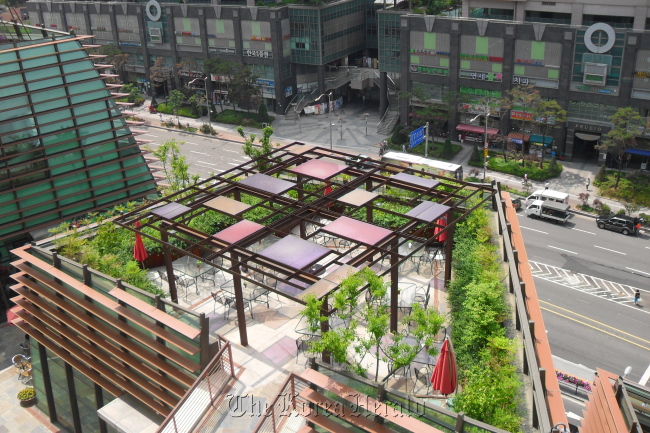
Yoon Se-hyung, an official at Seoul Metropolitan Government in charge of the program, said roof planting has many benefits for city management.
Besides its decorative and recreational appeal, a green roof helps improve air quality, conserve energy, reduce the urban heat island effect and mitigate stormwater runoff, while providing habitants for wildlife.
“Vegetation on the roof has a direct impact on utility bills, too, as it keeps buildings cool in summer and warm in winter,” she added.
For Han Sun-ok, the roof of her five-story villa in Huamdong, central Seoul, has a more practical use ― a farm that produces organic vegetables.
“This is my No. 1 treasure,” the 62-year-old housewife said, looking proudly at over 20 different kinds of vegetables, fruits and herbs growing in a dozen plastic bathtubs filled with soil. Every morning before breakfast, she comes to the roof to check on her plants, she said.
“When the weather is nice, my family has dinner out here, and we enjoy a view of the midtown city and Namsan.”
A nice and inviting rooftop garden has become a must-have for shopping malls and other commercial buildings striving to lure more potential shoppers.
“Having rooftop gardens serves our goal to provide a place for everyone. When the mother is shopping, the father can bring the kids to the roof garden to play while having a cup of coffee for himself,” said Jung Young-sun, a publicist for D-Cube City, a mega mall complex in Seoul’s western district of Sindorim.
Shinsaegae and Lotte, the country’s two largest department store chains, lead this trend, as they compete to introduce new styles of gardens.
Trinity Garden atop Shinsegae’s main store in Myeongdong is one of their best, experts said, as it mixes a conventional-style rooftop garden with artwork, creating a unique, upscale ambience.
Yeo Myung-hwan, one of its frequent visitors, said he loved the space’s quiet, peaceful and inviting mood.
“It is my favorite place to come with my friends and family,” he said. “It is good to shop, have lunch and sit around with my friends on a bench and talk.”
Joanie Chee, a traveler from Hong Kong, said roof gardens are beautifying the Korean scenery.
“It is nice to have nature around you apart from all these concrete buildings,” Chee said.
Despite the many touted benefits and public appeals, installing a garden on the roof of an existing structure has its risks and problems, experts warned.
A rooftop garden must be planned after careful consideration of the building’s condition and designed in a way that doesn’t cause damage, they said.
“Not all trees and plants are suitable for a rooftop environment,” Yoo said.
Maintenance can be a challenge, too.
The UNESCO building in Myeongdong was one of the earliest to install a garden on its roof in Seoul, but closed it in 2011.
“It looked all feasible back in 2002 when roof gardens were not so common. But we started having problems with the water leaking from the top and the roots coming through the concrete roof and walls,” an official in charge of the building management said. “We are not thinking about reopening the garden.”
Seoul’s best roof gardens
1. Trinity Garden
Besides trees, flowers and grass, the Trinity Garden in Shinsegae Department Store in Myeong-dong, Seoul, features some of the world’s finest artwork done by modernist sculptors such as Henry Moore and Joan Mir. The garden has a smashing view of Namsan and Seoul Tower.
2. S-Garden
S-Garden on the rooftop of Shinsegae Department Store, Uijeongbu, north of Seoul, has just opened for public in April. It not only has walking trails along various trees and plants but also has kid-friendly facilities such as the Elephant Fountain and Archeological Dig in which kids can go in and excavate fossils.
3. Four Season Park
Four Season Park is Korea’s biggest roof garden, located at Garden 5 shopping center in Songpa-gu, Seoul. Enough to hold three soccer fields, the spacious garden is divided into four areas, each with different themes. Besides walking trails, several ponds, cafes and benches, it has concert and exhibition areas, where different events take place every week.
4. D-Cube City
Opened in 2011, D-Cube City, located in Seoul’s western district of Sindorim, is a mega mall complex that has a department store, park, arts center, hotel and restaurants. Its roof garden is a great place for the young and trendy to meet up, with a number of nice cafes.
5. Dongguk University
Dongguk University, befitting its motto of becoming a “green campus,” boasts some of the city’s nicest roof gardens. Located at the foot of Namsan in central Seoul, the roof gardens on its campus offer a scenic view of the mountain, Cheonggye stream and downtown Seoul. All of them are open to the public.
By Lee Sun-young & Lee Hee-su
(milaya@heraldcorp.com) (hs@heraldcorp.com)
-
Articles by Korea Herald







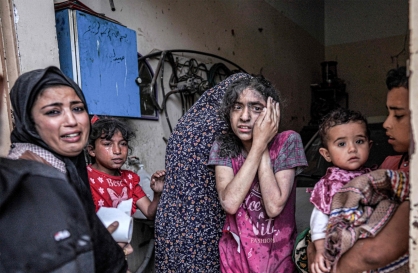
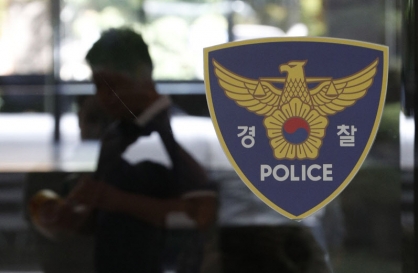

![[Music in drama] Rekindle a love that slipped through your fingers](http://res.heraldm.com/phpwas/restmb_idxmake.php?idx=644&simg=/content/image/2024/05/01/20240501050484_0.jpg&u=20240501151646)
![[New faces of Assembly] Architect behind ‘audacious initiative’ believes in denuclearized North Korea](http://res.heraldm.com/phpwas/restmb_idxmake.php?idx=644&simg=/content/image/2024/05/01/20240501050627_0.jpg&u=20240502093000)



